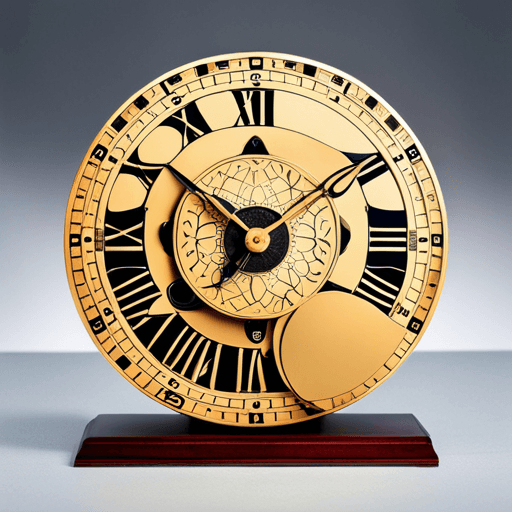Table of Contents
Greetings, Time Travelers!
Welcome to an exciting exploration of time-keeping devices! Time, as we perceive it, is the thread that weaves our lives together. It guides our schedules, marks our milestones, and forms the rhythm of our days. So, let’s take a moment to appreciate the fascinating journey of how we’ve measured time, from sundials to atomic clocks.
The Dawn of Time-Keeping: Sundials
The first recorded devices for measuring time were the sundials. Ancient civilizations such as the Egyptians and Romans used these simple yet ingenious devices. The concept was straightforward: as the Sun moved across the sky, the shadow cast by the gnomon (the part of the sundial that casts the shadow) would shift, indicating the time of day.
The Sands of Time: Hourglasses
The hourglass, another early time-keeping device, was especially popular in the Middle Ages. This device is composed of two glass bulbs connected by a narrow neck, allowing sand to trickle from the top bulb to the bottom one. The time it takes for all the sand to fall is known as an “hour,” giving birth to the term “hourglass”.
The Chime of Progress: Mechanical Clocks
The invention of mechanical clocks in the 14th century marked a significant milestone in the evolution of time-keeping devices. These clocks, powered by weights and gears, were more accurate than their predecessors and could even chime the hours, making them a popular feature in town squares across Europe.
The Pulse of Precision: Quartz Clocks
Fast forward to the 20th century, and we find the invention of the quartz clock. These devices use the regular vibrations of a quartz crystal under an electric charge to keep time. Quartz clocks are incredibly accurate, losing or gaining less than a second per day!
The Peak of Precision: Atomic Clocks
Today, the most accurate time-keeping devices we have are atomic clocks. These marvels of modern technology use the vibrations of atoms (usually cesium or rubidium) to keep time. Believe it or not, the best atomic clocks are so precise that they won’t lose or gain a second in millions of years!
The Future of Time-Keeping
As we look to the future, who knows what innovative time-keeping devices will emerge? Perhaps we’ll have clocks that can adjust to individual biological rhythms, or maybe we’ll even measure time using quantum phenomena!
Conclusion
The journey of time-keeping devices is a testament to human ingenuity. From the simple shadow shifts of a sundial to the atomic vibrations in the most accurate clocks, we’ve come a long way. Here at Zax News, we look forward to continuing this journey with you, exploring the fascinating world of time-keeping and beyond. So, until our next time-ventures, keep ticking!








